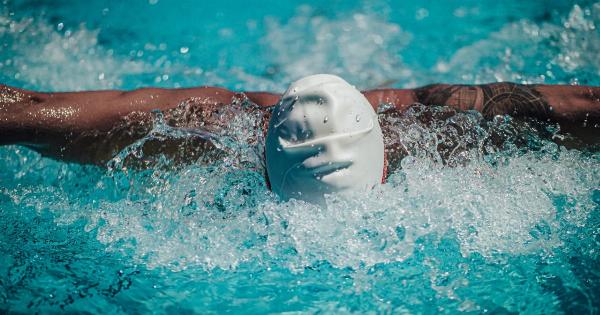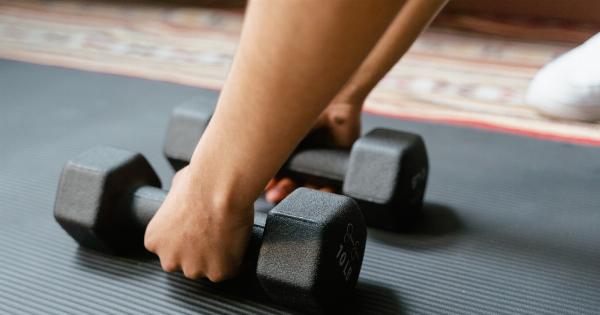Stroke is a significant health concern that affects millions of people worldwide. It occurs when the blood supply to the brain is interrupted or reduced, leading to brain damage.
This can result in various physical and cognitive impairments, including muscle weakness, balance problems, speech difficulties, and memory loss. While stroke recovery can be a challenging and lengthy process, research has shown that even mild exercise can have significant benefits for those who have suffered a stroke.
The Importance of Exercise in Stroke Recovery
Regular exercise has long been recognized as essential for maintaining good health and preventing a range of chronic conditions. When it comes to stroke recovery, exercise plays a crucial role in promoting physical and mental well-being.
Here are some key reasons why exercise is important:.
1. Physical Rehabilitation
One of the primary goals of stroke rehabilitation is to regain physical function and improve mobility. Exercise is an integral part of this process as it helps to strengthen muscles, improve coordination, and enhance balance.
The repetitive movements involved in exercise can also help retrain the brain and nervous system to compensate for lost abilities.
2. Cardiovascular Health
Stroke survivors are at an increased risk of developing cardiovascular problems due to the impact of the stroke on blood vessels and circulation.
Engaging in regular exercise can help improve cardiovascular health, reduce the risk of future strokes, and enhance overall cardiovascular fitness. Aerobic exercises, such as walking, cycling, and swimming, are especially beneficial for improving heart health.
3. Psychological Well-being
A stroke can have a profound psychological impact, causing anxiety, depression, and a decrease in overall quality of life.
Exercise has been shown to have positive effects on mental health by releasing endorphins, which are natural mood boosters, and reducing stress and anxiety. Additionally, participating in physical activity can provide a sense of purpose and accomplishment, leading to improved self-esteem and confidence.
4. Prevention of Secondary Complications
Stroke survivors are also at a higher risk of developing secondary complications, such as muscle stiffness, contractures, and pressure sores, due to reduced mobility.
Regular exercise, including range-of-motion exercises and stretching, can help prevent these complications by maintaining flexibility, improving circulation, and promoting healthy skin.
Types of Exercise for Stroke Recovery
There are numerous types of exercises that can be beneficial for stroke recovery. The specific exercises recommended will depend on individual abilities, preferences, and the severity of the stroke. Here are some examples:.
1. Strength Training
Strength training exercises involve using resistance, such as weights or resistance bands, to build muscle strength and endurance.
These exercises can help improve overall physical function, increase independence in daily activities, and reduce the risk of falls. Examples of strength training exercises include bicep curls, leg presses, and shoulder presses.
2. Balance and Coordination Exercises
Balance and coordination exercises focus on improving stability and control. These exercises can help reduce the risk of falls and enhance mobility.
Examples of balance and coordination exercises include standing on one leg, walking heel-to-toe, and using balance boards or stability balls.
3. Aerobic Exercises
Aerobic exercises, also known as cardiovascular exercises, aim to increase heart rate and improve overall cardiovascular fitness. They can help strengthen the heart, lower blood pressure, and enhance endurance.
Walking, swimming, dancing, and cycling are common forms of aerobic exercises for stroke recovery.
4. Range-of-Motion Exercises
Range-of-motion exercises involve moving the affected limbs and joints through their full range of motion. These exercises can help maintain flexibility, prevent muscle stiffness, and improve circulation.
Examples of range-of-motion exercises include stretching, arm swings, and ankle pumps.
Getting Started with Exercise after Stroke
Before beginning any exercise program after a stroke, it is crucial to consult with a healthcare professional or a certified stroke rehabilitation specialist.
They can help assess individual abilities, set appropriate goals, and provide personalized recommendations.
Here are some tips for getting started with exercise after a stroke:.
1. Start Slow and Gradually Increase Intensity
It is important to start slowly and gradually increase the intensity and duration of exercise sessions. Begin with shorter sessions of low-intensity exercise and gradually progress to longer durations and higher intensities as tolerated.
2. Focus on Proper Form and Technique
Ensure exercises are performed with proper form and technique to maximize effectiveness and reduce the risk of injury. Consult with a qualified professional, such as a physical therapist, to learn the correct techniques for specific exercises.
3. Make Exercise a Regular Habit
Consistency is key when it comes to exercise for stroke recovery. Aim to incorporate exercise into daily routines and establish a regular exercise schedule. This will help maintain motivation and maximize the benefits of exercise.
4. Listen to Your Body
Pay attention to your body’s signals and modify exercises as necessary. If an exercise causes pain or discomfort, it is essential to stop and seek guidance from a healthcare professional.
5. Stay Hydrated and Take Adequate Rest
Proper hydration is crucial during exercise to ensure optimal performance and prevent dehydration. Additionally, allow time for rest and recovery between exercise sessions to avoid overexertion and fatigue.
The Benefits of Even Mild Exercise
While moderate to high-intensity exercise has been extensively studied for stroke recovery, recent research suggests that even mild exercise can have significant benefits for stroke survivors. Here are some key benefits of even mild exercise:.
1. Improved Motor Function
Studies have shown that engaging in even mild exercise can improve motor function in stroke survivors. This includes improvements in muscle strength, coordination, and balance.
Regular exercise can help restore motor control and enhance overall physical function.
2. Enhanced Cognitive Function
Exercise has been found to have positive effects on cognitive function and memory in stroke survivors.
Even mild exercise, such as walking or gentle stretching, can stimulate brain plasticity, which is the brain’s ability to reorganize and form new connections.
3. Reduced Fatigue
Many stroke survivors experience severe fatigue, which can significantly impact their quality of life. Engaging in mild exercise, such as yoga or tai chi, has been shown to reduce fatigue levels and improve overall energy levels and well-being.
4. Increased Psychological Well-being
Mild exercise can also have a positive impact on psychological well-being. It helps reduce symptoms of depression and anxiety and promotes feelings of relaxation and stress relief. This can lead to improved overall mental health and quality of life.
Conclusion
Stroke recovery is a complex and challenging process that requires comprehensive rehabilitation strategies. Exercise, even when performed at a mild intensity, plays a crucial role in promoting physical and cognitive recovery after a stroke.
The benefits of exercise include improved motor function, enhanced cognitive abilities, reduced fatigue, and increased psychological well-being. Stroke survivors should work closely with healthcare professionals to develop an individualized exercise program that suits their abilities and goals.
By incorporating regular exercise into their routine, stroke survivors can take an active role in their recovery journey.




























